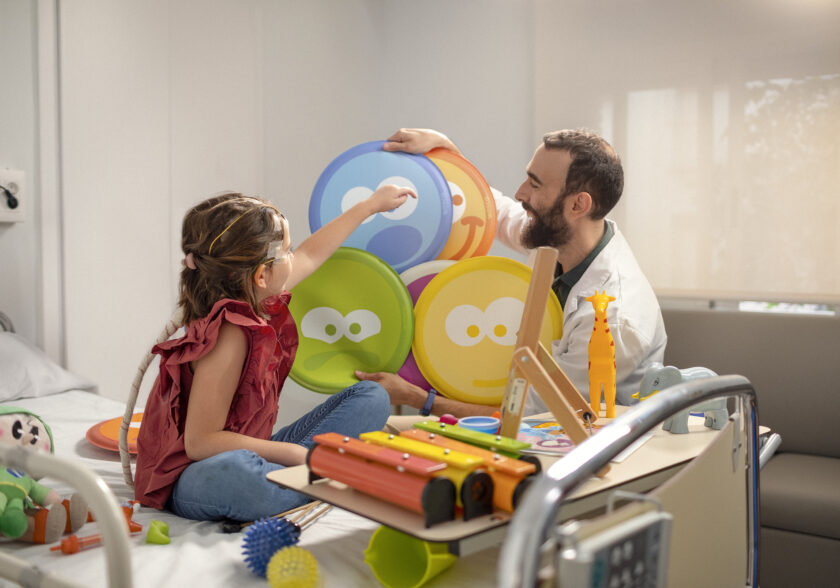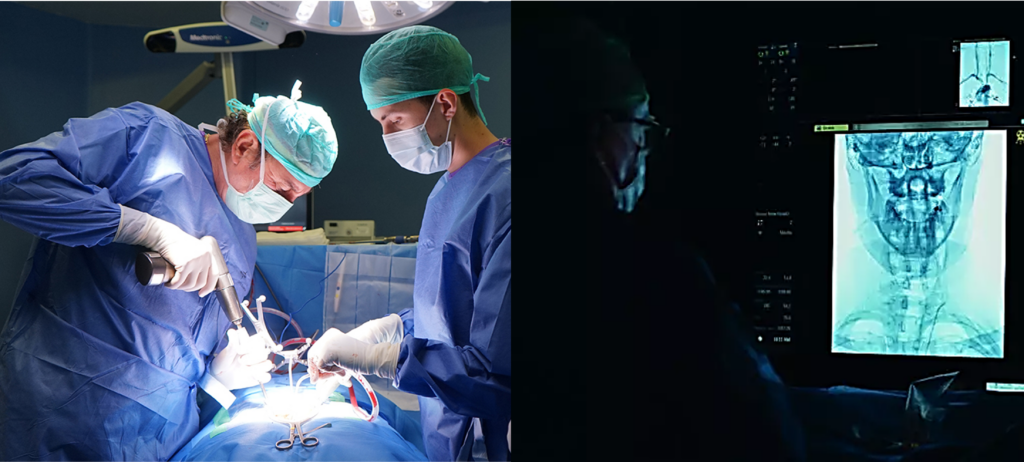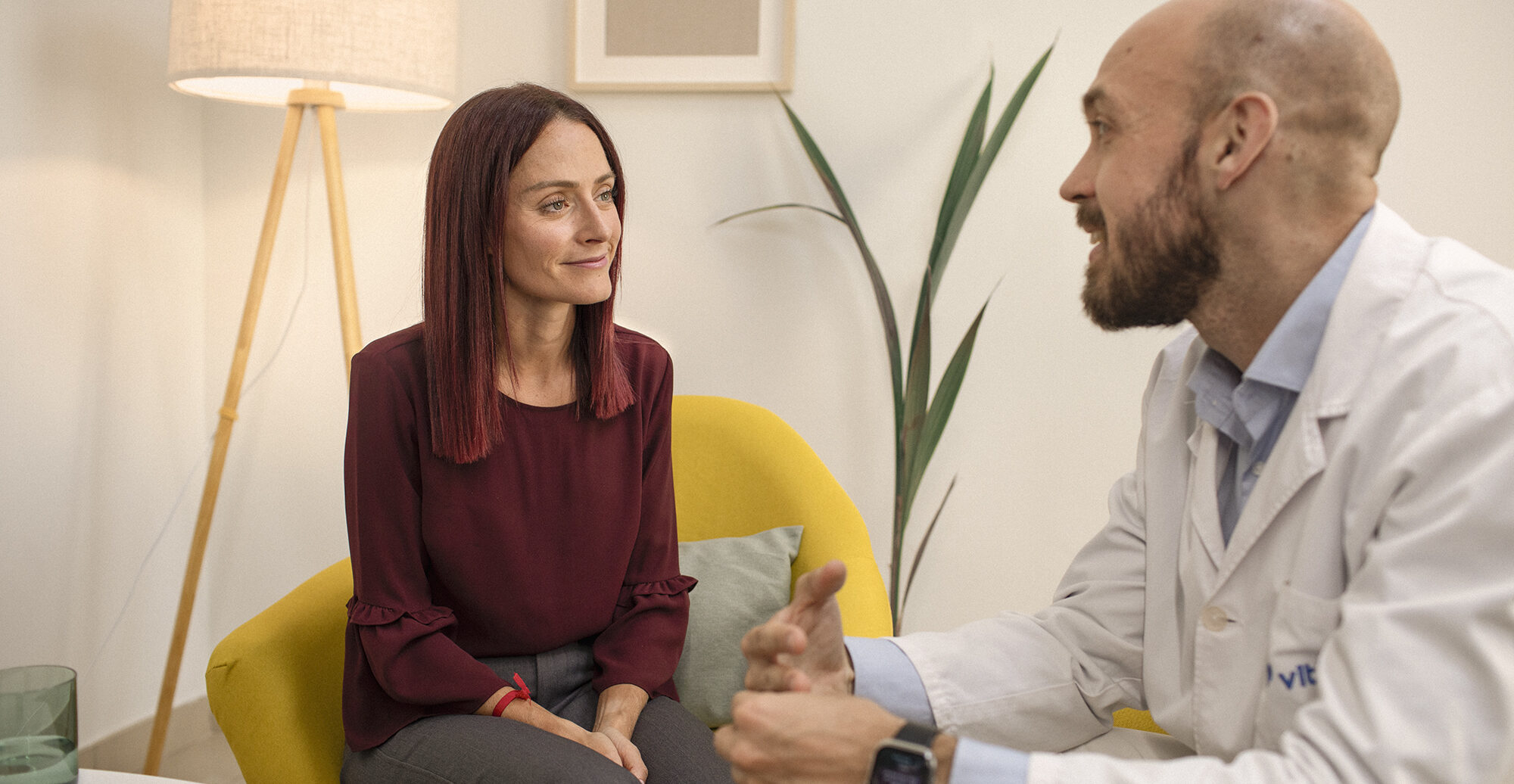Neuroscience Department

Vithas’ Neuroscience Department is a multidisciplinary department where all medical specialists are involved in the diagnosis and treatment of patients with neurological problems, working in a coordinated manner with the aim of offering comprehensive medical and surgical care for neurological conditions at all stages of life.
Neuroscience is a very important area of clinical care due to the significance of neurological damage for the patient, their relatives and society. There are many neurological disorders and there are even more symptoms associated with them, so many patients consult on this topic.
Clinical diagnosis allows us to select patients with a truly neurological pathology and must be complemented by other examinations such as radiology or neurophysiology, for which having specialised neuroscientists is important. Due to the social impact of neurological conditions, centres that specialise in the field are highly regarded.
The Neuroscience Department is made up of multidisciplinary teams including neurosurgeons, neurophysiologists, neuropsychologists, neuroradiologists and rehabilitation specialists.
Technological equipment
In addition, both the facilities and technological equipment of Vithas allow the Neurosurgery Department to implement new, more complex techniques, such as skull base surgery, minimally invasive spine surgery, dementia diagnosis, hydrodynamic tests for hydrocephalus diagnosis and deep lesion biopsies.
The Neuroscience Department is equipped to perform innovative operations such as wide-awake surgery, making it possible to perform on eloquent areas, such as the language lobe, which are not yet performed in any private hospital in the region.
We have fully up-to-date equipment that allows patients to receive complete treatment, including a high-speed motor, state-of-the-art endoscope and a navigator for locating tumours without opening the skull.
The navigator recognises the patient’s face and fits the image obtained over that of a previous resonance. This makes it possible to guide an operation or locate a deep lesion. In superficial lesions, it allows incisions to be adjusted right where the tumour is, offering greater precision, greater safety and lower risk of complications.
Other techniques and treatments
- Intracranial pressure monitoring: Intracranial pressure monitoring is a direct diagnostic tool that records the patient’s intracranial pressure by means of a sensor placed on the head. It allows the diagnosis to be adjusted more accurately than with other indirect methods.
- Skull base surgery: Skull base surgery is performed in collaboration with otorhinolaryngologists and makes it possible to access the skull base through the nose using an endoscope, without the need for incisions.
This technique involves less complications, less time spent in hospital and more convenience for patients, who can be discharged after 3 days. - Minimally invasive spinal procedures: Minimally invasive spinal surgery through which fixations and screws are placed through small incisions in the skin.
Neurology Unit (Adult and Paediatric)
The neurology unit treats patients with neurological conditions, such as cerebrovascular diseases, headaches, multiple sclerosis, epilepsy, neuromuscular diseases, Parkinson’s disease or dementias, performing a complete study, comprehensive treatment and follow-up on patients with nervous system disorders.
Within these illnesses, we treat those requiring urgent neurological attention, such as patients with strokes or epileptic seizures, among others.
Headache and migraine treatment
In the neurology unit we also treat conditions like headaches, which though common, can be disabling for many. After performing neuroimaging tests, we establish a medical regimen to improve the quality of life of patients who have headaches that interfere with their daily lives.
For patients with chronic migraines that are resistant to medical treatment, we perform a novel technique involving injecting botulinum toxin at the craniocervical level, which significantly decreases the frequency and intensity of headaches.
Other disorders treated in this unit are neurodegenerative diseases such as Parkinson’s disease, where we use all types of therapies for patients with both early-stage disease and more advanced stages.
Alzheimer’s and cognitive impairment
At Vithas we have all the resources needed to implement advanced therapies in patients who are progressing unfavourably with medical treatment.
We also treat patients with cognitive impairment associated with Alzheimer-type dementia, for which the neuropsychologists on our team perform a complete cognitive assessment.
Another novel diagnostic tool we offer for treating the disease is the determination of biomarkers of Alzheimer’s disease in the cerebrospinal fluid, which helps early diagnosis of the disease.
Main Pathologies and Diseases
Neurosurgery

- Traumatic brain and spinal cord injuries: From concussions to more severe injuries, such as intracranial hematomas and spinal fractures, these injuries can have long-term consequences on neurological function.
- Brain and spinal cord tumors: Whether benign or malignant, tumors require specialized evaluation and treatment by neurosurgeons, oncologists, and neurologists.
Neurosurgery

- Traumatic brain and spinal cord injuries: From concussions to more severe injuries, such as intracranial hematomas and spinal fractures, these injuries can have long-term consequences on neurological function.
- Brain and spinal cord tumors:Whether benign or malignant, tumors require specialized evaluation and treatment by neurosurgeons, oncologists, and neurologists.
Mental Health

Neuropsychiatric Disorders:
- Depression
- Anxiety
- Schizophrenia
- Other mood and behavioral disorders
Neurodevelopmental Pediatrics
Neurological Developmental Disorders:
- Autism
- Asperger Syndrome
- Attention Deficit Hyperactivity Disorder (ADHD)
At the forefront of the latest techniques and treatments.
Advanced Therapies
- Clinical Trials: At the Vithas Neuroscience Institute, we offer clinical trials for multiple neurological conditions. This allows many patients to benefit from the therapeutic potential of the latest drug lines and contribute to clinical research. Our team can offer this opportunity to selected patients who meet the inclusion criteria.
- Disease-Modifying Treatments: The various units of our team are experienced in using new-generation drugs to control the course of different chronic diseases, such as monoclonal antibodies for the treatment of migraines and myasthenia gravis, or the various immunomodulatory drugs used in multiple sclerosis and other demyelinating diseases.
- Duodopa and Apomorphine Infusion Pumps: Patients with advanced Parkinson's disease can benefit from advanced therapies frequently managed by our multidisciplinary team.
- Botulinum Toxin Infiltration: Conditions such as chronic migraines, dystonia, sialorrhea, or spasticity can benefit from the periodic infiltration of botulinum toxin, properly indicated by our group of experts.
- Local Anesthetic Infiltration: Some patients with headaches and craniofacial pain can benefit from periodic local anesthetic infiltration at pain points. Our Headache and Pain Unit is highly trained in its indication and procedure.
Neuromodulation
- Deep Brain Stimulation (DBS): Implantation of electrodes and application of electrical impulses to modulate neuronal activity in disorders such as advanced Parkinson's disease, certain drug-resistant epilepsies, or treatment-resistant depression.
- Non-Invasive Neurostimulation: Use of techniques such as transcranial magnetic stimulation (TMS) and transcutaneous electrical nerve stimulation (TENS) to treat neurological disorders and improve brain function.
Minimally Invasive Surgical Procedures
- Minimally Invasive Epilepsy Surgery: Development of less invasive surgical techniques, such as stereotactic surgery and laser ablation, for the treatment of epilepsy.
- Endoscopic Skull Base Surgery: Access to the skull base through the nose without incisions, offering fewer complications and shorter hospital stays.
- Minimally Invasive Spinal Procedures: Spine surgery with minimal incisions for the placement of fixations and screws, reducing recovery time and the risk of complications.

